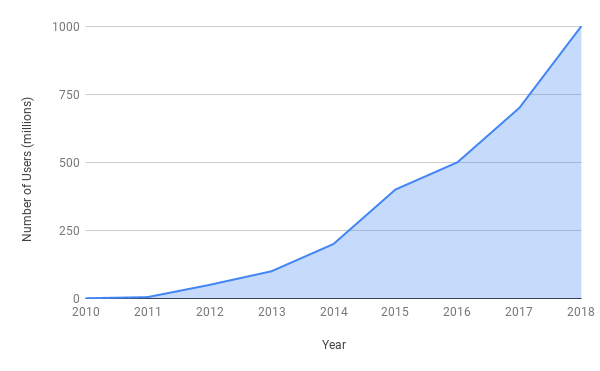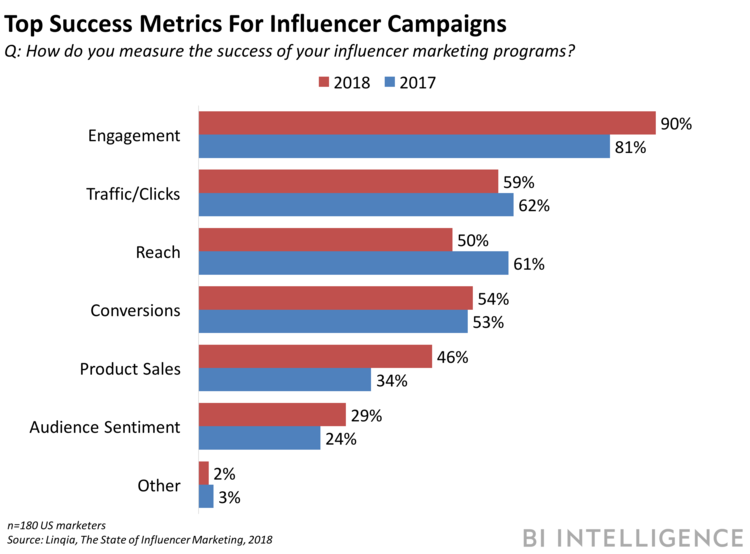Social media platform Instagram (and Twitter) announced recently that they are trying a new feature that will hide like and view counts for photo and video posts. While they say this move will help curb unhealthy social media competition and its inherent evils, what will this mean for influencer marketing if it becomes a permanent feature or if it’s just the beginning of similar tactics planned for the future?
Since the early part of the current century, when social media became the place to connect, advertisers knew they had to take business online to engage audiences. But a rapidly growing social media population also meant that there was a lot of information struggling for the attention of consumers and potential buyers, so brands seeking more effective ways to reach audiences, leveraged partnerships with individuals who had substantial followings and influence to sell products and services.
“The concept of influencer marketing has been largely abused,” says Nosike Nwigene, a Digital Marketing Manager at Insider, a PR agency which connects entrepreneurs in emerging markets to media influencers across the U.S. and Europe.
“It’s gone from leveraging genuine relationships with an audience that listens and is likely to act on content to the ruse that it is today–pay for play, build a follower base by however means possible and wait till a brand comes along with a cheque.”
Growth of Instagram Users, 2011-2018

The power of numbers
Social media has driven a maniacal obsession with numbers over the years, which is one of the reasons for Instagram’s new trial feature. While speaking with BuzzFeed News in April, Adam Mosseri, Head of Instagram, said the test was to create a less pressurized environment where people felt comfortable expressing themselves and focus less on like counts.
“We do hear people worry about how many like counts they get,” he told BuzzFeed.
This obsession with numbers grew even more popular with the rise of influencer marketing. Successfully creating clusters with the most amount of engaged audiences had become key to a new, seemingly easy, stream of income. The higher the engagement metrics-likes, views, and followers-an influencer can show, the more monetary value they are able to attract in an industry estimated to reach US$10 billion by 2022.

One of such influencers in Lagos, a comedian popularly known as Maraji, in an interview last year, said she went from earning N10,000 (US$28) per Instagram post in 2016, to somewhere between half a million and a million naira (US$1,400-2,800) per post. In South Africa, influencers can earn anywhere from R500-100,000 (US$35-700) per Instagram post. Influencers with more following and engagement can earn a lot more. Nonetheless, likes and comments can seem a trivial metric to base heavily funded marketing campaigns on especially with the knowledge that likes, followers and comments can now be purchased and carried out by bot accounts.
Tap, then double-tap
“On the scale of metrics and in accordance with the goal and objective of a social media campaign, likes and comments are what can be referred to as vanity metrics,” says Olubunmi Atere, a Nigerian Social Media Manager based in Nairobi, Kenya.
It takes less than a second to double-tap a photo on Instagram and you can do this for various reasons, from actually loving the content to double-tapping to help a friend win a new wig or a set of skin care products. But still, it is an indication that there is some level of awareness and engagement on an influencer’s post and it is hard to ignore both by users and the digital markers and brands who work with influencers.
Based on Instagram data, users currently like more than 4.2 billion posts every day.

“If your goal is to sell products or to affect the bottom line of a company, likes and comments won’t always cut it,” Atere adds.
Likes and comments are only then a semblance of awareness a social media influencer can wield but sometimes isn’t considered the real stuff. To track real conversions, influencer marketers employ a number of ways to measure influencer activities like assigning unique referral links with UTM tags or coupon codes and measuring whose links or codes have converted the most leads or from where the most traffic has been generated.
Hiding likes and comments may affect user behaviour but will more or less force influencer marketers to be more thorough and bullish about actual engagement from influencers as against reliance on vanity metrics to decide which ones should push what brand campaigns.
“The focus will be shifted to actionable metrics as opposed to vanity metrics. Influencers will have no choice than to put in the work and deliver tangible results to brands,” says Ebun Oluwole, a Social Media Marketing Strategist.
Curbing a numbers obsession
Twitter’s approach is slightly different. In the platform’s experimental prototype app, twttr, like and view counts are hidden and only appear when tapped, something they hope will veer off obsession with numbers and towards more conversations. But CEO, Jack Dorsey, is also said to be toying with the idea of having the follower count removed from the platform. “The question we’re asking is, is that necessarily the right incentive? Is the number of followers you have really a proxy for how much you contribute to Twitter and this digital public square?” Dorsey said in a September 2018 interview with Inc. Magazine.
Atere says she believes these changes need to be effected carefully but is excited about the new features which she says will drive interaction based on the quality of a given content and not for the sake of it.
“Hiding follower counts may deviate from the essence of the platform,” she adds, “If you remove follower counts, then there’ll be no influencer marketing. How do you know that an individual has built a community that you can target as a brand?”
For Nwigene, there is no certainty about the impact these features will have when fully rolled out but he believes that if follower counts are removed, it will hit the influencer market at its core.
With less focus on likes and views count, there’ll be a huge focus on the quality of content influencers can come up with using brand guidelines as these will have to pass across a brand’s essence and drive users to follow through with a call-to-action instead of mindless double-taps and generic comments. Influencer marketing tools used to identify influencers might also be big winners if these features become permanent as brands will have to use analytics provided by third-party app development companies to find influencers instead of vanity metrics.











